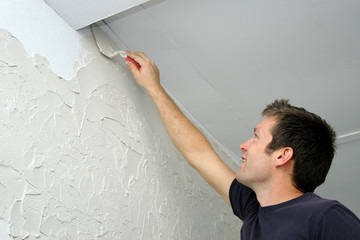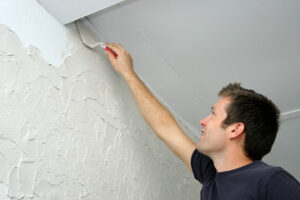Hamza Ali, known as Hamza Invests on social media, believes real estate development is one of the biggest opportunities in the world. Hamza Invests Review is recession-proof, high demand, low competition, and incredibly scalable.
Previously, Hamza invested in multifamily investments but found this more time-consuming. Instead, he focuses on developing empty lots into bustling flex spaces, which he then rents and sells for massive ROI.
Hamza Invests required a new website that effectively showcased Hamza’s expertise, attracted users to sign up for their Flex Space Untapped program, and provided valuable insights into flex space real estate investing. Our team worked closely with the client to understand their goals and target audience, and we created a strategy to build a beautifully designed website that resonated with their customers and achieved their objectives.
A new website was needed for Hamza Invests in order to successfully highlight Hamza’s experience, entice visitors to join their Flex Space Untapped program, and offer insightful information on investing in flex space real estate. After carefully collaborating with the client to comprehend their aims and target market, our team developed a plan to develop a stunningly designed website that met the client’s needs and helped them reach their goals.
The expert showcase section prominently displayed Hamza’s track record, experience, and success stories, building credibility and trust among website visitors. It also positioned him as a reliable authority on flex space real estate investing and increased interest in his Flex Space Untapped program. Compelling CTAs were strategically placed throughout the website to encourage users to take action and sign up for the Flex Space Untapped program.
Visitors to the website were encouraged to trust and believe Hamza by seeing his track record, experience, and success stories prominently featured in the expert showcase area. Additionally, it enhanced interest in his Flex Space Untapped program and established him as a trustworthy authority on flex space real estate investing. To entice visitors to take action and register for the Flex Space Untapped initiative, persuasive call-to-actions (CTAs) were thoughtfully positioned throughout the website.
Multiple options for visitors to stay connected with Hamza Invests, including social media integration and a newsletter subscription option, fostered ongoing engagement and community building. In addition, the website included valuable insights into flex space real estate investing to educate and inspire visitors.
Hamza Ali, better known as “Hamza Invests” on social media, is a real estate investor with an impressive portfolio of flex space developments throughout Texas. His goal is to rent these spaces and ultimately sell them for a massive ROI.
To achieve this goal, Hamza Invests requires a robust marketing strategy that includes creating valuable content online and leveraging social proof to build a loyal following. This strategy has worked well for Hamza, who now makes millions of dollars by offering exclusive paid programs like courses, private groups, calls, and accountability to his followers.
The Hamza Invests website showcases Hamza’s expertise in flex space real estate investing and encourages visitors to sign up for his Flex Space Untapped program. The site features a wide range of content, including case studies and success stories, that help visitors understand the opportunities and benefits of flex space real estate investing. Compelling CTAs are placed strategically throughout the site, encouraging visitors to take action and join Hamza’s program.
The Flex Space Untapped program is promoted on the Hamza Invests website, which also highlights Hamza’s experience in flex space real estate investing. The website offers a wealth of information, such as case studies and success stories, to assist users in comprehending the advantages and potential of investing in flex space real estate. Strategically positioned and persuasive call to action (CTAs) entice users to take action and sign up for Hamza’s program.
While the Hamza Invests website provides valuable information about flex space real estate investing, it does not contain all of the answers that people may be looking for. This is especially true if they are unfamiliar with the concept of flex space real estate. Hamza Invests often claims that his website is not a self-improvement movement, but this is largely false. Despite his best intentions, Hamza’s business interests always come first.
Although the Hamza Invests website offers a wealth of knowledge regarding investing in flex space real estate, it may not have all the answers one could be seeking for. This is particularly true if they don’t understand what flexible space real estate is. Although this is mostly untrue, Hamza Invests frequently asserts that his website is not a self-improvement movement. Even with the greatest of intentions, Hamza’s priorities are always his business.
Hamza is a seasoned residential and commercial real estate investor who has built a portfolio of over $270 million in flex space developments throughout Texas. He has a wealth of knowledge and expertise in strategic investment, development, and mentoring with over 15 years of experience internationally. He also has extensive social media presence and shares investment opportunities, updates, and valuable insights with his followers.
During our discovery phase, we learned that Hamza wanted to showcase his expertise in flex space real estate development by establishing himself as an authority in the field. To achieve this, we developed a strategy that included building a beautifully designed website and creating compelling content.
The website’s design was tailored to appeal to the client’s specific target audience. This helped to establish a sense of trust and professionalism, fostering an immediate connection with visitors. The site also featured a newsletter subscription option and contact form to facilitate ongoing engagement and community building.
The website’s content showcased Hamza’s expertise in flex space real estate investing by highlighting his track record, experience, and success stories. This established him as a credible authority in the field and encouraged users to sign up for his flex space real estate coaching program. Compelling CTAs were strategically placed throughout the website to encourage users to take action and sign up for Hamza’s program. This resulted in increased conversions and an increase in user engagement.
Hamza Invests has created a real estate investment program that offers an opportunity to build your own “flex spaces.” These are industrial office warehouse projects built from the ground up. These properties are in high demand and offer a great ROI. They are also recession-proof, low stress, and provide genuine passive income. If you’re interested in learning more, book a call with Hamza.
Getting started with this type of investment is easy. Hamza will walk you through everything, and he’ll even help you find the right property for your budget. He also teaches you how to avoid the common mistakes that many investors make when buying real estate.
The website prominently featured Hamza’s expertise in flex space real estate investing, positioning him as a credible authority in the field and encouraging visitors to sign up for his Flex Space Untapped program. The content also offered valuable insights into flex space real estate investing, making it easier for users to understand the benefits of this investment strategy.
The site also provided several options for visitors to stay connected with Hamza Invests, including social media integration, newsletter subscription, and contact forms. This encouraged ongoing engagement and fostered community building. However, a key feature of the website was its visually appealing and persuasive CTAs, which were strategically placed throughout the site. The CTAs were designed to entice visitors to take action and engage with Hamza Invests, increasing conversions. This strategy was particularly effective because it allowed Hamza Invests to stand out from competitors and gain new leads. The CTAs were also targeted to the right audience, ensuring that they were relevant and persuasive. For example, a CTA that ended an email with a call to action such as “Book a free discovery session” would have been less compelling than one that ended an article with a call to action such as “Receive our weekly email updates.” This ensured that the CTAs were relevant and engaging for the right audience, resulting in increased conversions.


 A drywall patch kit will cover holes up to four inches across, but you’ll need support boards for larger areas. These are installed inside the hole on either side and prevent the patch from collapsing into the wall.
A drywall patch kit will cover holes up to four inches across, but you’ll need support boards for larger areas. These are installed inside the hole on either side and prevent the patch from collapsing into the wall.